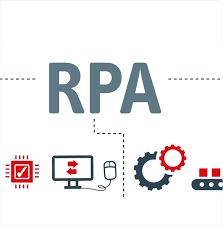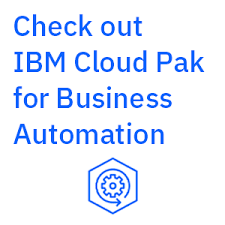
 Author: Geoffrey Hamm, Sr. Automation Advisor
Author: Geoffrey Hamm, Sr. Automation Advisor
During these unprecedented times… although an applicable phrase, it has quickly become a tired one. In lieu of baseball, Instagram Live and Zoom happy hours have become the new American pastime. And hearing phrases like “the new normal” has become… the new normal.
As a global citizen, I wonder what things will look like going forward. Will luxury brands start to peddle designer face masks? Will social distancing make flying in coach more comfortable? Will Best Buy remain by appointment only (I kind of hope so)?
As an Automation professional on the other hand, I wonder what we can do to prepare our clients for an uncertain future. After spending more time than I care to admit thinking about this, I have reached the conclusion that there are three valid (and somewhat sequential) steps for responding to this pandemic:
Preface: “Maintain Operations Amid Disruption” is a phrase I borrowed from our friends at Automation Anywhere. I reused it because I agree.
In times of disruption, the first thing we need to do is find our footing. This can be especially difficult when concepts such as a distributed workforce are novel. Before these “unprecedented times”, some companies were not enabled to work remotely and had to literally figure it out overnight. For a lot of companies, so much depends on co-location:
When you’re in the office, someone may hand you your work and, when you’re finished, you may hand it to someone else. If you don’t know how to complete it, you may call in reinforcements from a few desks over.
When you’re working remotely, these transactions are much harder to observe.
 Recommendation: Model your processes so everyone has a clear understanding of their roles and responsibilities.
Recommendation: Model your processes so everyone has a clear understanding of their roles and responsibilities.
Also, a lot of workers didn’t have company-issued workstations and some companies didn’t have VPNs in place (another crutch when it comes to remote work).
 Recommendation: Lean on task bots to interact with on-prem systems and applications (intranet sites, desktop applications, mainframes, etc…).
Recommendation: Lean on task bots to interact with on-prem systems and applications (intranet sites, desktop applications, mainframes, etc…).
Unlike humans, bots cannot contract coronavirus.
While these are two steps we can take immediately to stay afloat, we need to be honest with ourselves here. If we are only keeping our heads above water, we will still eventually drown.
We can’t remain in a stabilization state forever. At some point, we need to graduate to subsequent steps. At some point, we need to build a boat.
I am constantly getting asked what my clients are doing and how they’re handling the pandemic? The ones asking me this: other clients.
These past few months, I’ve been sitting courtside with these companies watching them plot their respective courses. There appear to be only two outcomes – some are in a holding pattern, and some are doubling down. There is no in-between. There is no “business as usual”.
From my vantage point, there is no better time to get ahead than now (once you’ve stabilized, of course). There is no better time to get creative about the way your business runs than a time in which you are already forced to be creative. A down economy is the best time to prepare for a rebound, especially if you have idle resources. Finding a project that is transformation (one that matters) can not only improve the way in which you operate, it can also improve the headspace of your employees in the interim – something they can sink their teeth into / a reason to get out of bed in the morning.
Recommendation: Use Automation Compass to analyze your process models and discover automation opportunities.
There are so many things we can do to improve operations – I’ve made a career out of it. Here are just a few ideas:
 Recommendation: Build workflow applications.
Recommendation: Build workflow applications.
Build applications that coach workers through their tasks. This will cut down on the back-and-forth. We can also use this exercise to extract valuable insights as to how our processes are actually performing – insights that will be pivotal in subsequent steps (i.e. Disruption-Proofing).
Recommendation: Automate complex decisions.
![]() There is always going to be a need for humans when it comes to creativity and decision making. That being said, there are a lot of decisions that are calculation-based and monotonous.
There is always going to be a need for humans when it comes to creativity and decision making. That being said, there are a lot of decisions that are calculation-based and monotonous.
Part of the “Art of Automation” is determining what work should be performed by humans, and what should not. Calculation-based decisions (especially very complicated ones with lots of inputs) are much better off in the hands of a rules engine.
Recommendation: Digitize physical documents.
With a distributed workforce, it’s very hard to reference the contents of a filing cabinet. Not only does digitization make your documents accessible, it also makes them searchable. Getting the data off the page and into a content management system will make it possible to share with people outside the office… even if those people outside the office are the same ones that used to be inside the office.
The future is uncertain and disruption is unforeseeable, thus you may be asking “how can we prepare for something that is uncertain?”. The answer is simple: use scalable technologies to build flexible solutions.
 By taking advantage of things like the Cloud Pak for Automation and all its componentry, we can work towards the goal of being Disruption-Proof.
By taking advantage of things like the Cloud Pak for Automation and all its componentry, we can work towards the goal of being Disruption-Proof.
Recommendation: Create a Center of Excellence to responsibly scale your Automation solutions.
Recommendation: Consolidate your software footprint. Only keep what you use. Only use what you need.
Recommendation: Re-evaluate your infrastructure. It might be a good time to move to cloud.
To get all philosophical on you, Automation should be put in place to improve the lives of not only your suppliers and customers, but also your employees. Automation makes everyone’s life a little easier. Leaning into technology in times of need is hardly a new concept – just Google all the technology invented for WWI and WWII. Turning to technology to make things easier during hard times can be a great neutralizer, and a great catalyst for progress.
If we can use this pandemic as a time of creation and innovation instead of paranoia, we can create a better future for both ourselves and for our work. So, instead of focusing on the “new normal” (at some point it will just be “normal” anyways), why not focus on the future of work and how to make it Disruption-Proof?
Salient Process is a full-service digital business automation shop and proud IBM Automation business partner. To learn more about us at our website, request a free consultation with one of our expert automation advisors! We look forward to guiding you and your company along your own unique Digital Business Automation journey.